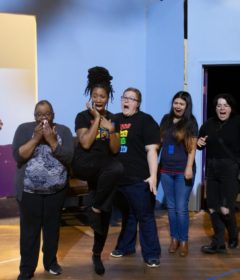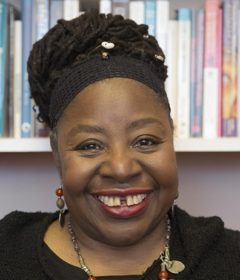Pianist George Winston Returns to Stetson
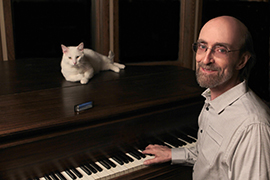
Editor’s note: This story originally was posted Feb. 15, 2018.
Stetson students may have heard strange sounds coming from Elizabeth Hall back in the late 1960s – if they happened to venture by the building at 3 a.m.
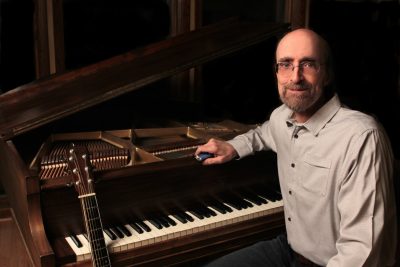
“I’d sneak into Elizabeth Hall to play the pipe organ,” said renowned pianist George Winston, who will return to the venue to perform Sunday, Feb. 25, 2018, as a benefit for the Stetson School of Music Scholarship Fund. “At three in the morning, nobody else was practicing the organ anyway.”
Winston attended Stetson University from 1967 to 1970 before moving briefly to New Orleans and then on to California. In 1980 the placid, melodic instrumentals on his second album, “Autumn,” launched him to international acclaim.
Accolades for his work as a solo pianist has continued through more than a dozen albums, including his latest CD, “Spring Carousel,” as well as collections featuring blues, the music of jazz pianist Vince Guaraldi (of “Peanuts” fame) and the rock band the Doors.
But it wasn’t folky tunes or organ major stuff, such as Bach’s Fugue in G minor, that Winston played alone at Stetson in the still of the night.
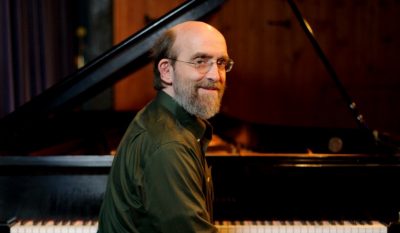 “Of course, the first thing I tried was ‘A Whiter Shade of Pale,’ ” Winston said during a phone interview, referring to that song by the British rock band Procol Harum. A No. 1 hit in 1967, the song featured a meandering, melancholy organ.
“Of course, the first thing I tried was ‘A Whiter Shade of Pale,’ ” Winston said during a phone interview, referring to that song by the British rock band Procol Harum. A No. 1 hit in 1967, the song featured a meandering, melancholy organ.
“Nothing was locked back then,” Winston said. “I knew the dean of the school of music (Paul Langston). He was a great organist … I’m sure he knew everything. He just looked the other way because I was really dedicated to practicing. I’m sure I didn’t play it very well. It was just a thrill to do it. I like the sound of any organ.”
That love had been bred a few months earlier when Winston, who spent his early childhood in Montana, was about to graduate from high school in 1967 in Miami. There he heard the Doors, that Los Angeles rock band that featured organist-pianist Ray Manzarek behind charismatic singer Jim Morrison.
“I heard the Doors and I said, ‘This is by far the greatest thing I ever heard — I gotta get an organ and play in a band,’ ” Winston said. He bought a Farfisa, a compact electronic organ. “So that summer of 1967, I started playing.”
On the recommendation of a friend who was a year ahead of him, Winston enrolled at Stetson – to study sociology. Never mind that Winston wasn’t a music major – he still got a music education at the university.
“I really was studying music all the time — more than regular school,” Winston said. “Everybody had a little stereo in their dorm rooms. A lot of kids from, like, New York City and Boston had their record collections. I’d hear something and just knock on doors and say, ‘Who’s that? Oh, Blood, Sweat and Tears.’ ‘Who’s that? Oh, that’s Spirit.’ ‘Who’s that? Thelonious Monk.’ ”
During his first semester at Stetson, Winston attended a number of “frat pledge introductions,” he said. “I’m a member of nothing, but I just went to hear the bands and write down stuff. Anytime a band had an organist, I’d stand behind the organist and take notes. Then I’d ask him questions at intermission, and they’d always tell me. Then I’d go back to the dorm and practice.”
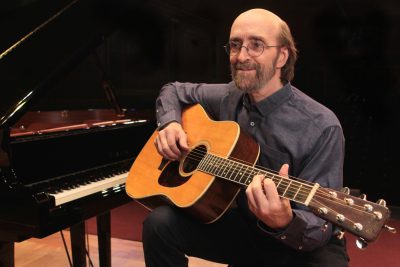
In those days the music building was across the street from Elizabeth Hall, Winston said, adding “I’d sneak into the piano practice rooms at night, all the time. I’d sneak in and play the harpsichord a little bit.”
He joined a group called the Tapioca Ballroom Band, composed of Stetson classmates and a drummer from high school.
“We had various incarnations of that band for about three years,” Winston said. “We’d play rock ’n’ roll at frat parties, the president’s reception, various functions at the student union building, and occasionally in Gainesville and at the pier in Daytona.”
Winston left the university midway during his junior year and began his trek westward, with his Stetson endeavors serving him well as piano became his main instrument.
“I’m no (music) reader at all,” he said. “But I learned music theory by just analyzing the keyboard.”
He became enamored with such New Orleans pianists as James Booker, Professor Longhair, Dr. John and Allen Toussaint, and also stride piano legend Fats Waller. As their influence found its way into Winston’s music along with Guaraldi and the Doors, Winston continued his mellow “rural folk piano” style on such albums as “Winter into Spring,” “Summer” and “Plains.”
His 2004 album “Montana – A Love Story” featured originals, traditional songs from the United States, Quebec, Ireland, China and Japan, and pieces by Frank Zappa, Sam Cooke, Philip Aaberg, Leadbelly and others.
“George Winston is the kind of artist who demonstrates what fertile ground there is to be trod in the vast open spaces among musical genres,” said music critic Jay Gabler on the website classicalmpr.org.
In 2012, Winston became ill during a performance in Idaho and was rushed to the emergency room. He was diagnosed with Myelodysplastic Syndrome (MDS), a blood cell disease that was once considered to be pre-leukemia but is now considered a form of cancer.
Winston received a bone marrow transplant at City of Hope, a cancer treatment center in Duarte, Calif. During his lengthy treatment and recovery there, he returned to his Stetson ways.
“I had permission to use the piano in the hospital auditorium, so every night I was practicing for when I would start touring again,” he said. “I would do my normal thing I started at Stetson – start at midnight. I still start at midnight and practice two or three hours.”
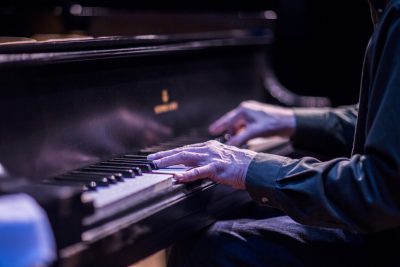 And then, Winston added, “These songs just happened – 59 of them. I’m not a composer. I don’t put them together very often. There are people who do it on purpose. I don’t know how they do it. I can’t even imagine doing such a thing. I put them together when they happen.”
And then, Winston added, “These songs just happened – 59 of them. I’m not a composer. I don’t put them together very often. There are people who do it on purpose. I don’t know how they do it. I can’t even imagine doing such a thing. I put them together when they happen.”
Some of those songs became Winston’s latest album, “Spring Carousel – A Cancer Research Benefit,” released in March 2017. Previous Winston albums benefited hurricane relief and Louisiana wetlands restoration.
His upcoming Stetson concert, like his past performances at the university over the decades, will once again support the Neighborhood Center of West Volusia through food donations and proceeds from CD and merchandise sales, while ticket proceeds will benefit the Stetson School of Music Scholarship Fund. Attendees are requested to bring a bag of non-perishable food to the show.
Yes, Winston realizes he’ll be “only about five feet” from that pipe organ in Elizabeth Hall during his concert. While he’ll also play some guitar and harmonica during his show, don’t expect him to crank out “A Whiter Shade of Pale” on the pipes.
“I haven’t played organ since 1971,” he said. “It’s not my instrument to play. It’s my instrument to enjoy, for sure.”
-Rick de Yampert
If You Go
George Winston will be in concert at 7:30 p.m. this Sunday, Feb. 25, at Lee Chapel in Elizabeth Hall on the Stetson campus, 421 N. Woodland Blvd., DeLand.
Tickets are $40 general admission, $150 VIP seating and post-concert reception, and are available online at stetson.edu/music-tickets. For information: 386-822-8950.

